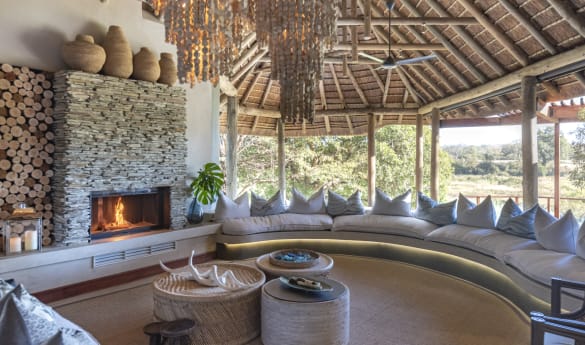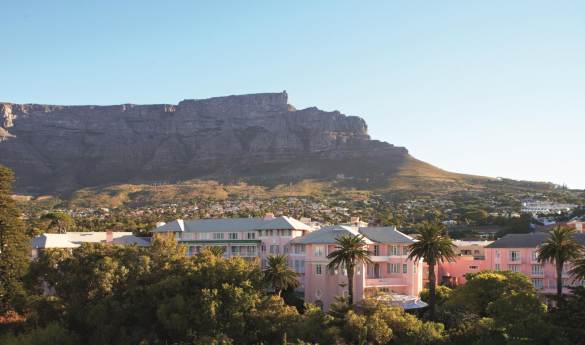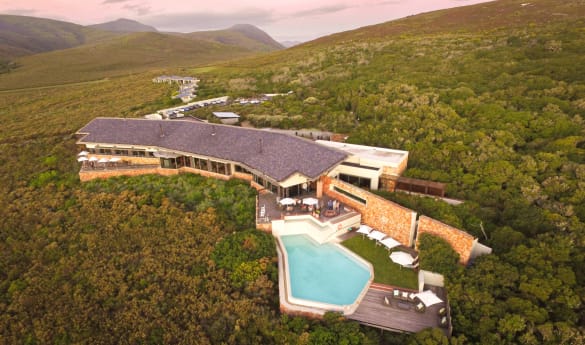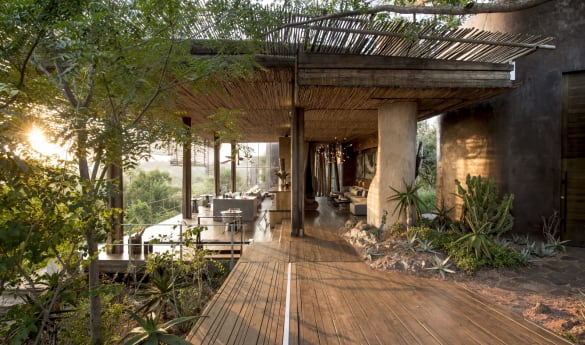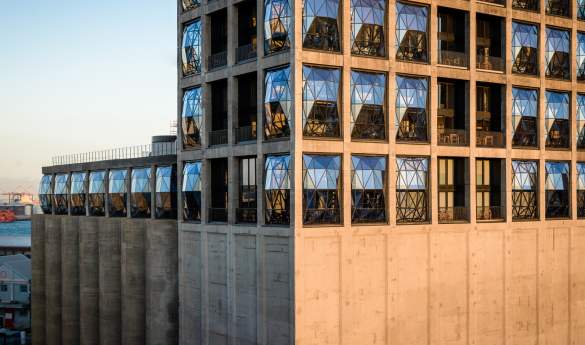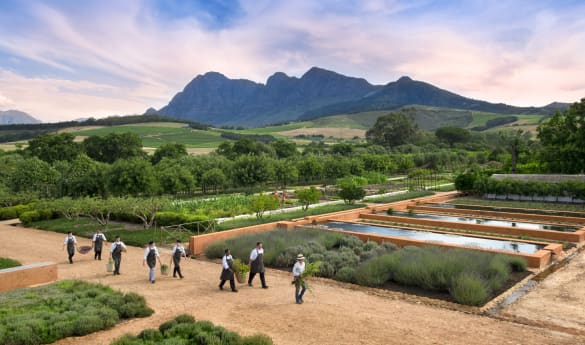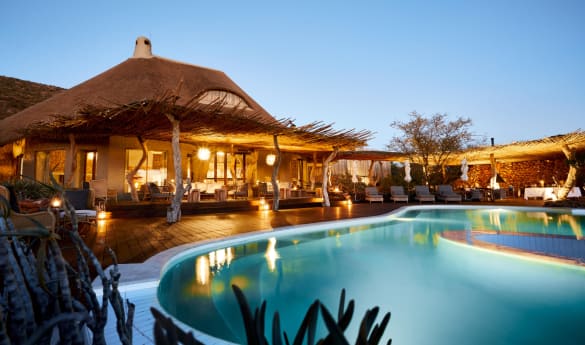A Guide to the Traditional Food of South Africa
From braai to biltong, discover South African cuisine and our top recommendations on what to eat when you’re in South Africa.
04 January 2023

While South Africa might be a famous destination for thrill-seekers and safari-goers, it should also be high on every foodie’s list, offering an array of delicious dishes and unique flavours that are not to be missed.
An Introduction to South African Food
As a country with a colonial past, South Africa’s cuisine is made up of various influences and traditions that come together to create unique cooking styles and practices.
German, French, and British settlers certainly made their mark on South African food, but the two main styles that reflect this country’s heritage are Cape Dutch and Cape Malay cooking. The Cape Dutch style of cooking is greatly influenced by the Dutch East India company bringing slaves from areas like Bengal, Java, and Malaysia to South Africa. The cooking styles combined over time with the result being typically Dutch meat-based dishes flavoured with spices like allspice and nutmeg.
Cape Malay cuisine has similar roots and is heavily influenced by the Dutch bringing slaves from Indonesia and other parts of Africa to the Cape. These groups were the first to bring Islam to the region, along with their own range of cooking practices and traditions. Food is a huge part of Cape Malay culture, and you’ll find many Cape Malay variations of popular dishes like bobotie, koeksisters, and sosaties (meat cooked on skewers).
Today, South Africa’s cuisine is a unique blend of cultural influences, from Dutch and German to Indonesian, resulting in European-style dishes made with eastern spices and flavours.

What Is the Most Popular Food in South Africa?
Meat is the centrepiece of any South African meal - from hearty stews to rich curries. This can range from familiar favourites like chicken, beef, and lamb, to more exotic and regional specialities like ostrich, springbok, impala, and even crocodile.
Braai, the South African equivalent of barbeque, is one of the most popular cooking styles, where meat is once again the star of the show. Derived from the Dutch word for ‘grilled meat’, a braai is different from other forms of barbecuing in that it must be done over a fire, with the fire often staying lit even after the food is cooked.
More than just a way to prepare food, a braai is a method of cooking that is steeped in tradition and spans all cultures and groups. It brings people together across the nation and is the go-to for any social event or celebration. While braais almost always consist of a range of grilled meat mains, you’ll also find many delicious side dishes that bring those typical South African spices to the plate. The delicious food is often served with beer and wine, adding to the celebratory atmosphere.
If you’re a vegetarian and are wondering what to eat in South Africa, don’t worry. Nowadays, you’ll often be able to find vegetable-based versions of some of the most popular foods, especially in larger cities like Cape Town and Johannesburg.
Hot Travel Tip: Interested to see what wines pair with this delicious cuisine? Read our guide on South Africa's incredible Winelands!
Traditional South African Dishes
From national dishes to sweet treats, here are some of our favourite foods to try in South Africa:
Bobotie

Considered by many to be the South African national dish, Bobotie (pronounced ba-bo-tea) is a meat-based dish and one of the most well-known examples of Cape Malay cuisine. This hearty meal combines minced meat, typically lamb or beef, with curry spices (turmeric, cumin, curry powder) onions, milk-soaked bread, and dried fruit, usually raisins or sultanas. The meat is topped with an egg and milk mixture and baked in the oven. It’s usually served with yellow rice, another staple South African food. This recipe can also be made with lentils instead of mince, so you can still try this delicious dish if you don’t eat meat.
Boerewors

One of the most popular foods in South Africa, boerewors, or farmer’s sausage, is a type of sausage made from beef mince that is enjoyed throughout the country. While they may seem simple, these delicious sausages follow strict guidelines and must contain 90% meat to count as boerewors. The remaining 10% is for spices like cloves, nutmeg, and coriander, or other ingredients, such as lamb or pork, which are added to give a richer flavour. Boerewors are a staple at braais and are served with side dishes like roosterkoek, a type of grilled bread roll.
Eager to experience a traditional South African braai during your trip? Take a look at our campfire cooking experience and get in touch with our experts to plan your very own braai.
Chakalaka and pap

Two other popular braai side dishes, chakalaka and pap, are often enjoyed alongside mains just like boerewors. Chakalaka is a vegetable-based South African dish that combines beans, onions, peppers, carrots, and a unique blend of spices to create a punchy side that is great alongside meat. It’s also often served with pap, a corn meal side that’s similar to polenta. The spicy chakalaka and creamy pap make for a winning blend and these are two dishes that should definitely be on your list to try.
Biltong

Biltong is a type of cured dried meat that’s popular across Africa, especially in South Africa. The name comes from the Dutch words 'bil', meaning meat, and 'tong' meaning strip. Unlike the meat jerky you might be familiar with, which is usually sliced, marinated, and cooked, biltong is first cured in vinegar, then airdried and cut into strips. This process results in buttery-soft and intensely flavourful dried meat. Typical types of biltong include beef, chicken or fish, but you can also find it made from game like kudu or springbok. Biltong is usually eaten on its own as a snack or it can be included as an ingredient in other South African meals like potjiekos.
Potjiekos

Potjiekos, literally meaning ‘small pot food’, is another traditional food eaten in many parts of South Africa. This stew consists of meat and vegetables, slow-cooked over an open flame in a cast-iron pot (potjie). The dish is cooked in layers and should not be stirred until it’s ready to be eaten. The result is a rich and varied taste, and since the layers are kept separate, you should still be able to discern every ingredient when you’re eating. You’ll find many variations of potjiekos throughout South Africa, but we’d recommend trying one made with oxtail.
Vetkoek

Vetkoek, meaning ‘fat cake’ in Afrikaans, is a type of cooked dough ball that’s simple yet delicious. This typical South African food is deep-fried, giving it a crisp and golden exterior and an irresistibly fluffy interior that you can’t wait to sink your teeth into. This versatile food is served with both savoury and sweet toppings, from cheese to honey. A common topping is curried beef mince, and you’ll often find street vendors selling vetkoek stuffed with this tasty filling.
Durban bunny chow

Another South African street food dish is bunny chow. Despite what the name suggests, bunny chow - sometimes just called bunny - is made with mutton rather than rabbit and consists of a hollowed-out loaf of bread filled with meat curry. You can also find vegetarian versions made with bean or lentil curry instead of traditional mutton.
This food comes from the Indian community in Durban, a city on the east coast of South Africa, and there are a few theories on its origins. One theory claims the dish was created as an easy way for Indian workers to transport their lunch, another that it was invented as a food that didn’t require Indian golf caddies to use cutlery to eat it. Whatever the true origin, one thing everyone can agree on is how delicious this humble, yet hearty meal truly is.
Hot Travel Tip: After some bunny chow, why not take a walk to one of Durban's golden sand beaches for a fun day out!
Malva pudding

While South Africans may love their meat, there are a few desserts that are really worth a try during your visit - one of which is Malva pudding. This Cape Dutch baked dessert is made from flour, soda, milk, butter, eggs, and the key ingredient, apricot jam. The dish is then topped with a rich sauce made from cream, butter, sugar, and vanilla. The sauce is poured over the pudding while it’s still piping hot, allowing it to soak through the whole thing and keep it moist. While there are a few theories about the origin of the name, many believe it comes from the Afrikaans word malvalekker, meaning marshmallow, due to the cake’s sweet flavour and airy texture.
Koeksisters

Another unmissable sweet treat is koeksister, a sweet pastry made from plaited dough that’s fried and then coated in a sticky and sweet syrup, giving it a deliciously crunchy finish. If you’re in Cape Town, you should also look out for koeksister, the Cape Malay version of the dish. This variant comes in the form of fried dough balls, often rolled in cinnamon or coconut. Whichever version you’d like to try, this popular South African food can be found at street food stalls and supermarkets alike.
Regional Destination Manager and South Africa expert Harriet Whitmarsh shares her recommendation for the best places to try some of these dishes:
“The recently opened Klein JAN on the exclusive Tswalu Reserve is one of the most exciting restaurants to open in SA. Here, the culinary traditions, ingredients and regional produce of the Northern Cape play into the restaurant’s seasonal menu. The owner, Jan Hendrik van der Westhuizen, was even the first South African chef to achieve a Michelin star for his namesake restaurant in Nice, France.
Where To Find the Best South African Cuisine
One of the best places to try a range of foods is in Cape Town. Home to both Cape Dutch and Cape Malay cuisine, here you’ll find an eclectic mix of traditional dishes. We’d recommend a visit to Gold, a restaurant offering an indulgent 14-course tasting menu that showcases many traditional African dishes and South African specialities.
If you’re after a more authentic experience, many foods can also be found at street markets and food stalls throughout South Africa. While there are definitely regional variations, many of the classic dishes above are also eaten across South Africa so you can try them wherever you’re staying.

South Africa regional specialist Harriet says:
“There is a plethora of foodie experiences that we can offer in South Africa. End a visit to the visually iconic Bo-Kaap region with a Cape Malay cooking class. Enjoy a “flavours of Cape Town” tour which is essentially a guided food tour with a qualified chef and food critic. Or, opt for something a little more extravagant and be transferred by helicopter to a private residence in a tranquil West Coast fishing village. With oyster and mussel beds in front of the property, enjoy the freshest possible delectable meal on the beach – partnered with champagne of course.”
So, whether you’re looking for fine dining or local cooking, our travel consultants can help you find the best places to eat across the country and help you plan a foodie holiday to remember.
This entry was posted in and tagged South Africa.
Favourite Hotels and Lodges in South Africa
When you travel to South Africa we can offer you an extensive property portfolio, from high-end hotels to guesthouses and boutique lodges. They have all been visited by our experienced Travel Consultants so be inspired and follow in their footsteps.
Other blogs you may also be interested in...
Why Scott Dunn?
Unique to You

- We listen to your travel goals and craft unique trips that are bespoke to you.
- We’re with you every step of your life’s travel journey, from honeymoons to family trips and beyond.
Seamless Service

- Global offices in the UK, US, and Singapore for 24/7 seamless service.
- We offer flexibility if your plans change so you can book with confidence and peace of mind.
Carefully Curated Collection

- We’ve curated an elevated collection of accommodation, experiences, and guides.
- Committed to fostering close global relationships to continue bringing you unique experiences.
Luxury in Every Sense

- We deliver a sense of luxury that matters most to you.
- Awarded Condé Nast Traveller’s Top Travel Specialists in the World 12 years in a row.

